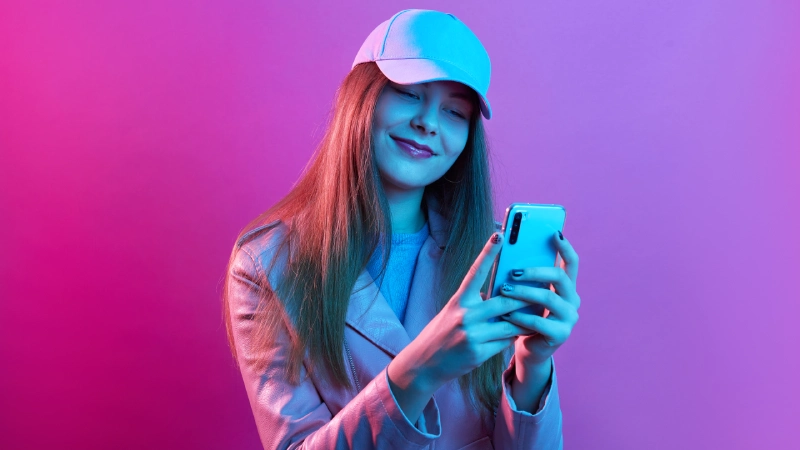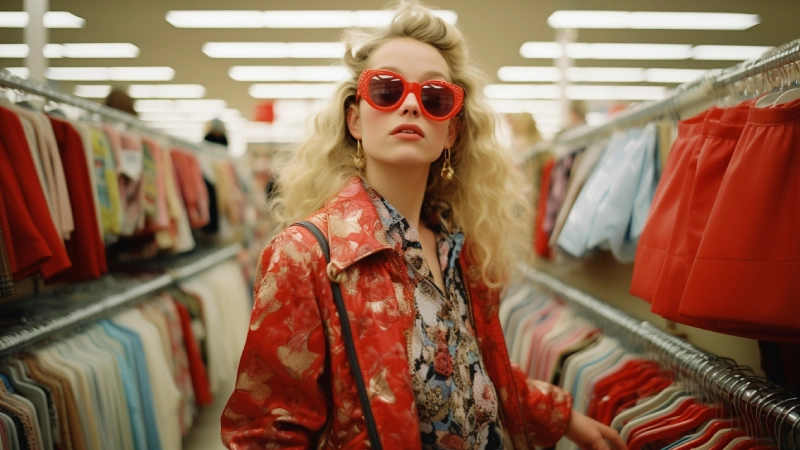Table of Contents
Highlights
- Explores Smart Fabrics, biotech fibers, leather alternatives, and new sustainable materials.
- Examines smart textiles with sensors for health, sports, and safety uses.
- Highlights the growth of digital fashion, including avatar clothing and mixed physical-digital releases.
- Looks at scaling, business models, and partnerships that are shaping the future of fashion tech.
Fashion’s long-standing relationship with technology has evolved from being just a novelty to becoming part of production lines, research labs, and virtual wardrobes. In the past decade, a new wave of startups has blurred the lines between biology, electronics, and fashion. These companies grow fibers in bioreactors, weave sensors into sportswear, and create designs that exist only as pixels. These ventures are not just flashy experiments; they are developing new materials, new business models, and new connections between the creator and the wearer.
Materials reimagined: biotech and next-gen fibers
Startups that combine biology and textiles are changing material science for fashion. By using fermentation and cellular agriculture methods, several companies create protein-based fibers and leather alternatives that match, and sometimes surpass, traditional materials in strength, comfort, and sustainability. These methods seek to reduce reliance on petrochemical sources and animal farming while introducing new performance features for designers. Early pioneers in biofabrication have gained significant investment and partnerships with well-known fashion brands, indicating that biological materials are advancing from lab prototypes to commercial production.

Woven intelligence: smart textiles and embedded sensors
Not all innovation is easy to see at first. Smart textiles integrate sensing, actuation, or computation directly into yarns and fabrics. This allows clothing to monitor biometrics, adjust insulation, or provide haptic feedback. Startups are focusing on healthcare with continuous vitals tracking for patients, sports with real-time posture and performance monitoring, and occupational safety with garments that alert users to heat stress or toxic exposure.
The benefits are twofold: fabrics that add practical features to clothing and data streams that brands or service providers can use to offer personalized experiences or subscriptions. Industry trackers identify hundreds of startups and a rising number of commercial pilots in sports and medical fields, indicating that this sector is moving into a practical growth phase.
Digital couture: garments that live in the cloud
Parallel to physical innovation, a lively scene of digital-first fashion brands is creating garments that exist only in virtual spaces. These “digital couture” houses sell outfits for avatars, social media photos, and AR filters. They often use blockchain, NFTs, or centralized marketplaces to manage ownership and origin. Beyond being unique, digital pieces provide a low-impact way to experiment creatively, rapidly change trends, and create new revenue sources. Consumers can buy a dress for a profile picture or a virtual concert appearance instead of physical items. Market launches and curated marketplaces have started to make this idea more common. Investors and established brands are looking into hybrid physical and digital releases that value both scarcity and sustainability.

From lab to wardrobe: the scaling challenge
Moving from prototype to mass-market clothing creates bottlenecks. For biotech fibers, scaling fermentation processes while keeping costs competitive requires a lot of capital. For smart textiles, integrating electronics without losing washability and comfort needs new manufacturing standards. Startups often depend on partnerships with established mills, textile engineers, or contract manufacturers to bridge these gaps. The path to scaling up is practical rather than just technological. Supply chain integration, regulatory compliance in health-adjacent applications, and consumer acceptance decide if a breakthrough material becomes a common part of our wardrobes. Reports tracking startups highlight that many promising innovations stay in pilot or niche deployments until production costs decrease or infrastructure changes.
Business models: service, subscription and hybrid commerce
Fashion tech companies are trying out business models that move away from selling garments as a one-time transaction. Examples include garments-as-a-service, which packages smart clothing and analytics into subscriptions, on-demand manufacturing made possible by digital patterning, and direct-to-avatar sales for digital fashion. These models change how we view clothing, turning it into an ongoing relationship with updated fits, firmware updates for smart garments, and seasonal digital releases. They also create recurring revenue streams that can help cover the high initial costs of research and development. Investors are paying attention. Articles and investor roundups frequently showcase startups that blend technological innovation with scalable monetization plans.
Design practice transformed: co-creation and rapid iteration
Digital tools and programmable materials help designers work more quickly and engage customers in design choices. Parametric patterning, 3D scanning for body measurements, and virtual try-ons cut down on guesswork in fit and cut. This lowers returns and waste. Designers can make changes to a virtual garment before using any material, or provide consumers with personalized adjustments based on scans. This change makes high-quality customization available to more people and lessens the environmental impact of poorly fitting mass production.

Consumer implications: privacy, durability and desirability
Smart garments bring up important questions about data. Who owns the biometric signals that a shirt records? How is that data protected? Durability is another concern. Sensor-infused garments must withstand repeated washing and use without breaking down. In digital fashion, discussions focus on perceived value. Will consumers pay a good amount for virtual scarcity, or will interest diminish? Startups and regulators will need to address these issues to maintain consumer trust and encourage more sales beyond early adopters.
Collaborative ecosystems: startups, houses and labs
Many successful fashion tech initiatives come from partnerships. Startups offer specialized materials or software. Established fashion houses provide design expertise, brand recognition, and distribution channels. Academic labs and textile research centers often develop the key innovations that startups later commercialize. This cooperative model reduces risk and speeds up real-world testing; it is essential when effects need to be verified in comfort, aesthetics, and manufacturability. Industry lists and innovation trackers display an ecosystem filled with collaborative projects and alliances across sectors.

Conclusion
Startups in smart fabric and digital couture are not just creating future clothing; they are developing new production methods, business partnerships, and user experiences that could change the nature of clothing entirely. Although there are still technical and commercial challenges, the progress is evident. Investors, brands, and labs are shifting from separate experiments to combined systems. The outcome is a more diverse, functional, and possibly more sustainable fashion scene. In this new landscape, a garment could be grown, woven with technology, and worn both in real life and online.